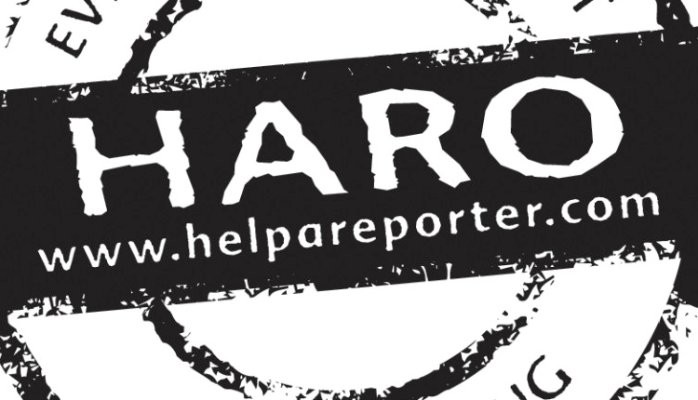Help A Reporter Out | What is HARO login | How to Use HARO Pitch

Help A Reporter Out, or HARO is for you if you’re looking for more backlinks from well-known websites and journals. HARO is a very passive way of obtaining high-quality backlinks and press mentions, unlike most link development strategies. Just remember that it will take some time and that you will need to deliver high-quality solutions to the questions.
What benefits you can get from Haro:
- Boost your readership.
- Boost the effectiveness of your HARO SEO approach.
- Boost your company’s or brand’s visibility.
How do you make yourself stand out? In this article we will discuss and Knowing how to write a HARO pitch is the key.
Table of Content:
What is HARO?
How to Use HARO Pitch for Backlinks?
How to Write a Great HARO Pitch in 6 Easy Steps?
What is Cision’s role in Help A Reporter Out?
Help A Reporter Out (HARO) FAQ – Conclusion
What is HARO?
Let’s have a look at what HARO is before we get into the root of the matter. Help A Reporter Out, or HARO is a service that connects journalists with a variety of sources and gives you the opportunity to gain valuable media coverage for your company.
What exactly is HARO outreach? When a journalist needs an expert opinion for a story they’re working on, they submit a request to Help A Reporter Out, which then distributes it to the experts that use their platform.
Getting Started with HARO:
Help A Reporter Out (HARO) is a free service that gives journalists access to a large database of potential sources for upcoming articles, as well as daily possibilities for sources to get valuable media coverage.
The amazing thing about HARO (Help A Reporter Out) is that journalists approach you. This is in contrast to conventional link-building strategies, which require you to undertake all of the marketing yourself.
It’s easy to HARO login. All you have to do is go to HARO’s homepage and click the signup button, then fill out the form.
How to Use Haro for Backlinks:
HARO Link Building: To achieve a high ranking, you must first establish a superb reputation and establish the reliability of your website. HARO Backlinks are a great way to accomplish this. HARO (Help A Reporter Out), on the other hand, is a backlink outreach tool that connects journalists with sources, giving you a once-in-a-lifetime chance to gain high-quality media attention.
Three times a day, HARO (Help A Reporter Out) sends out a number of journalist inquiries. These inquiries are organized into several categories that cover a wide range of sectors. So, no matter what industry you’re in, HARO can assist you in obtaining relevant backlinks for increased visibility!
Here’s how to get started using HARO and get your first backlink.
1. Create an account as a source.
Going to the HARO website and registering is the first step toward obtaining your first backlink. To see all of the plans available, select ‘I’m a Source’ and then click Subscribe Now. You have agreed to receive emails from us.
2. Seek out Opportunities
You will receive three emails each day from Monday to Friday after registering with HARO (Help A Reporter Out). These emails will have questions sorted into themes such as business, technology, and healthcare, among others.
Your ability to get a quality backlink through HARO is determined by how quickly you reply to leads, so make sure you examine your HARO emails as soon as they arrive.
Two things to consider before deciding on an opportunity:
1. Choose the Best Leads: Only respond to the ones that align with your objectives and help you define what you want to be known for.
2. Do some research: It’s a good idea to look for publications that your potential clients might be interested in.
3. Making the pitch:
Make sure to offer a thoughtful response when responding to an inquiry. A one- or two-line email will not suffice. Make the journalist’s job as easy as possible by giving them something they can practically cut and paste into their piece.
When responding to a question at the Help A Reporter Out platform, provide your author bio as well as a link to your website. Make a detailed outline of how you want it to appear in the article.
Here are some pointers to help you craft the ideal pitch:
Provide a Bio: If you’re featured, your bio should be precisely how you want it to appear in the article.
Include the Important Details: Make sure you respond to each point in the query in a unique and quotable way that can be easily publicized.
Finish with a Call to Action that includes your contact information and urges the reporter to call you or contact you with more HARO queries.
Make Backlinking Easier: Make it easier for the author by giving downloadable versions of your headshot, company logo, and bio to use on the website.
How to Write a Winning HARO Pitch in 6 Easy Steps:

Monitor your work using Help A Reporter Out (HARO) in the same way you track traditional pitches and other PR activities.
1. Begin with your subject line.
2. Compose an Energetic Greeting
3. Craft an interesting introduction
4. Provide an answer to the question
5. Tell us about yourself and your company
6. wrap it up.
1. Begin with your subject line.
The subject line of your HARO pitch email is crucial, as it is the first impression you’ll make on the reporter reading it. Reporters are on a tight schedule, so they’ll skim subject lines, pausing only to read the contents of emails with subject lines that speak to them and their goals.
At the conclusion of the subject line, include HARO (Help A Reporter Out) and the name of the publication you’re submitting to, so it catches the reporter’s notice. As a result, the reporter is immediately aware of the story for which your quote is intended.
Your subject line should be attention-getting and click-worthy. Your goal is to persuade the reporter who reads your subject line to want to learn more. Use strong, unique words and phrases to pique people’s interest.
Examples:
- Summary of Topic – News Outlet Name – HARO
- Fast Ways to Save Money – Forbes– HARO
2. Compose an Energetic Greeting
Don’t use copy, past boring words or phrases. In your greetings, always include the recipient’s first name. It shows how excited and enthusiastic you are to be writing to them.
You want to elicit excitement from the very first sentence. Recognize and warm up your recipient’s sense of urgency.
Examples:
- Hi [Name of the Reporter]!
- Good morning, [Name of the Reporter]!
- Happy Friday, [Name of the Reporter]!
3. Craft an interesting introduction:
Because you’ve already been recognized by other major people, reporters will naturally want to learn more about you.
- Always begin with your name and the name of your business.
- Mention your achievements, particularly those that distinguish you and reinforce your reputation.
- If you’ve been featured on Yahoo, MSN, or Forbes, for example, let everyone know.
Use the space between the subject line and greeting to demonstrate why your expertise is worth their attention over everyone else’s. Your opening paragraph should catch your reader.
Example:
My name is [Insert your name here]. [State Your Credentials] and [Role of Company/Blog], a [Company/Blog] that has been mentioned in [list additional media appearances, such as Street Wall, Fox Business, etc].
4. Provide an answer to the question:
If you don’t immediately answer the query at Help A Reporter Out platform, or the question presented, the reporter will be forced to choose you over other persons pitching.
Multiple questions may appear in a query. If they do, be sure to respond to each one. They may disregard your response and continue on to reading the pitches if you overlook information. Help A Reporter Out
If you keep your responses concise and to the point, you’ll have a better chance of being chosen. Don’t overstate or overwhelm the reporter with information.
5. Tell us about yourself and your company:
While you stated any aspects that support your credibility at the beginning of your presentation, this is where you can go into greater detail about your credentials. Include any relevant academic degrees, important jobs, and other professional achievements.
Strike a balance between promoting oneself and remaining humble. Talk about its successes, how long it’s been in business, and anything else that comes to mind.
If you’re picked in Help A Reporter Out, you can gently request that the reporter include a link back to your website. They are usually delighted to do so.
Example:
I am [Your Name], the owner of [Blog or Company Name], [A Blog or Company the Discusses…]. Explain what makes you stand out, then include some social proof such as page views, Domain Authority, and social media followers.
6. wrap it up:
Summarize your pitch and conclude by requesting that the writer consider you as a source. Tell them you’ll also share the article on all of your social media outlets. Remember to thank the reporter for their time and express your interest in speaking with them again soon.
Example:
Please let me know when the article is published if you decide to include my response in it so that I can assist promote it on our social media platforms!
Thank you so much for taking the time to read this and for considering my request. [Here you should write the reporter’s name].
More Tips on how to write a HARO (Help A Reporter Out) pitch:
Move quickly: don’t wait more than 12 hours to send your pitch.
Maintain a Clean Environment: For quick reading and skimming, use bullet points, short sentences, and well-organized paragraphs.
Be Unique: If you can come up with a unique response to the query, you’ll stand out.
Don’t Use a Template: Cutting and pasting isn’t a good idea. Changing names and contact information alone will not come across as personal.
Read Queries Carefully: Don’t pitch to every query you receive. Examine them to ensure that they are consistent with your goal and values.
Avoid being sales: Don’t use it to promote your products or services. Rather than pitching a reporter as a client, you’re pitching the possibility to assist them.
Make Your Response Quotable: Make sure your response isn’t too long so the reporter can utilize it without having to spend a lot of time editing it.
Limit your alerts: By narrowing your niche, logging into HARO (Help A Reporter Out) using the email address used to send the requests, and selecting “My HARO” in the top right corner. Then go to “HARO Preferences” and choose which niches you want to get.

4. Keep an eye out for your placement.
You can also keep track of your placement by following the author’s or media outlet’s feed. When a reporter has chosen your pitch, they will usually contact you, but if they forget, you may set up a Google Alert for your brand name to be notified whenever it is referenced.
Using HARO to Its Full Potential:
Finding trustworthy leads and getting a placement in HARO (Help A Reporter Out) can be challenging at times. Here are some expert ideas to help you get the most out of this amazing tool.
1. Go over all of your emails.
You’ll receive three emails every day, so make sure to read through all of them so you can take advantage of the best possibilities to promote your business.
2. Understand the Rules:
Check out the rules for sources offered by HARO (Help A Reporter Out) before responding to any query. You and your firm could be banned if you break the regulations.
3. Obtain Quality Leads
You can also use HARO (Help A Reporter Out) to generate long-term leads for your business. Help reporters out by replying to a query, and you’ll develop good relationships that will benefit you in the future.
4. Be quick to respond:
Reporters from HARO receive responses promptly, so don’t wait to respond once you’ve found a lead.
5. Don’t stray from the topic:
Make careful to craft a meaningful, on-topic pitch that will benefit the reporter while also landing you a placement.
6. Comply with the instructions:
Many inquiries offer precise answer guidelines, and following them can make your pitch much more appealing.
7. Set Yourself Apart:
In your response, include something truly unique and innovative. Start with a catchy headline and finish it off with personalized, relevant content that will elicit a favorable response.
8. Establish Relationships:
Developing such relationships with reporters can help you get included in additional stories by the same reporter, which can be helpful to your business.
9. Patience is essential:
It can take a long time for an article to get published, but a little patience can go a long way.
You may quickly build your credibility in the business and gain the visibility you require by obtaining relevant backlinks from influential media sites.
What is Cision’s role in Help A Reporter Out?

Cision is a globally recognized provider of earned media tools and services for public relations and marketing communications professionals. Users can utilize Cision’s platform to find key influencers, create and distribute strategic content, and track significant results.
The principle is simple: Journalists and bloggers send inquiries, which are requests for sources. (At 5:35 a.m., 12:35 p.m., and 5:35 p.m., Eastern time, HARO sends their inquiries three times a day.)
You can also use the service to create relationships with journalists and boost your brand’s reputation, as well as increase the number of high-quality backlinks.
Check out these 10 HARO (Help A Reporter Out) recommendations to help you succeed with the service.
1. Read and Analyze the Question: Do you meet all of the journalist’s requirements? If the answer is yes, then respond. If it isn’t, then let it go.
2. Be quick to respond: Although it is recommended that you pitch your expertise or narrative within an hour of the query being sent out, if this is not possible, you must still pitch by the published date.
3. Edit and proofread: Treat each pitch as if it were a cover letter for a coveted job, no matter how brief. Use Grammarly’s free editor to help you out.
4. Stick to the topic: Keep it on topic! Unless the inquiry specifically requests it, do not utilize HARO (Help A Reporter Out) to distribute a press release, tout credentials, or pitch a product.
5. Be precise: HARO pitches should be no more than 300 words long. To submit links to images or documents in your pitch, try using Google Drive or Dropbox.
6. Use soundbites in your writing: If you’re responding on behalf of a client to a source request, include your client’s response in your response. Don’t just say, “My client can speak to you about this.”
7. Include a backup contact number: This makes it easier for journalists to contact you if you include your phone number, email address, website, and social media handles.
8. Establish Media Relationships: You can share their content on social media if you share common interests. For an unsolicited pitch, do not collect a journalist’s contact information.
9. Make HARO a Content Marketing Powerhouse: After the source request is closed, wait a month. Then, dust off your responses and repurpose them as content for your company’s website or blog.
10. Keep Track of Your Efforts: As they say, practice makes perfect! Subject lines, pitch material, and media relations strategies should all be tested. Continue trying and refining until you find the sweet spot and begin to gain more attention.
Help A Reporter Out (HARO) FAQ:
Is HARO legit?
The platform is simple to use and produces good articles as well as excellent opportunities for our company to receive media exposure by assisting reporters with particular quotes.
How many people are familiar with Haro?
HARO now has over 50,000 reporters engaged, with 150,000 people receiving three daily emails loaded with source requests.
In PR, what is Haro?
Help A Reporter Out, or HARO is a publicity service founded by public relations expert Peter Shankman in 2008.
What is the meaning of master HARO?
When you join up for your free subscription, you’ll receive “Master” emails from HARO (Help A Reporter Out) right away. That means you’ll get three emails a day with PR opportunities.
What role does HARO play in journalism?
When a publisher or writer has an article idea but is having trouble fleshing it out with a professional perspective, they can use HARO to get what they need.
What is a (HARO) help a reporter out coupon code?
HARO rarely offers promotional discount codes. With hundreds of consumer web searches for Help A Reporter codes and offers each month, Help A Reporter is a highly sought-after brand when it comes to discount codes and promotional discounts.
Conclusion:
HARO is a straightforward yet incredibly effective tool. Responding swiftly to source requests and creating relationships on social media will help you succeed. You will not only gain media attention, but you will also strengthen your brand’s reputation and position as a market leader if you do so.
While pitching HARO (Help A Reporter Out) requests takes time, the effort is well worth it. It’s beneficial to your site to be mentioned in other publications, and you never know who might do so. Obtaining a high-quality backlink is always worthwhile.





